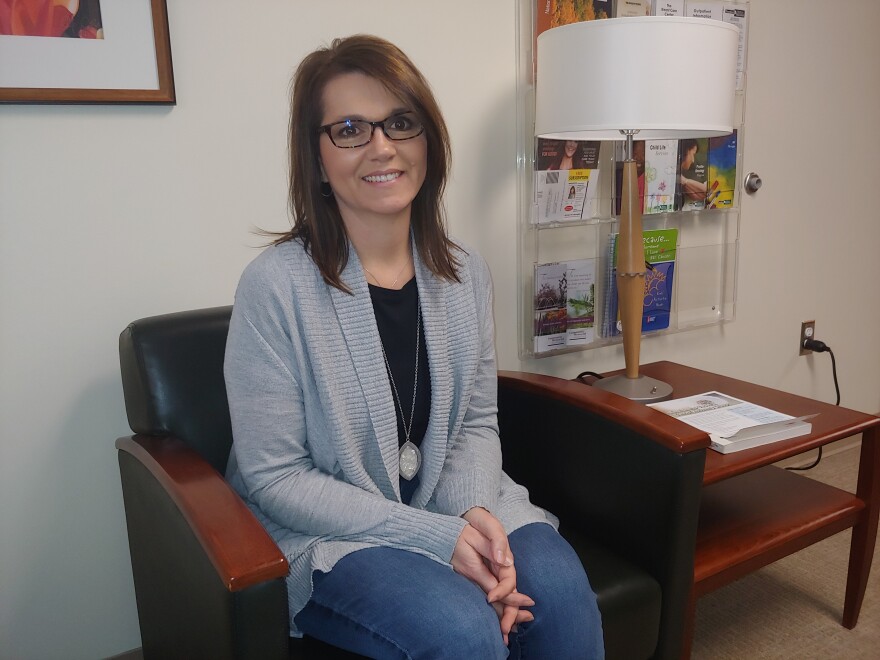A 47-year-old Wisconsin woman will get a better idea next week of how well a new cancer treatment device is doing at attacking her liver tumor.
The cancer center run by Froedtert Hospital and the Medical College of Wisconsin in Wauwatosa recently became the second facility in the U.S. to offer the latest version of a high-tech unit. It simultaneously takes images of a tumor, and delivers high-dose radiation.
The patient is Paula Wendt, a school nurse from Fond du Lac. She's had a difficult last four-and-a-half years, first being diagnosed in 2014 with an eye cancer, ocular melanoma. It eventually spread to her liver. She had drug and radiation treatments, which helped. But last fall, the cancer came back and Wendt had an eye removed. She says the cancer also returned to her liver.

"There is a spot that was growing. So, at that point, I had to see my radiation oncologist again, and that's when he was very excited about this new machine, MR-Linac, that was coming to Froedtert, and thought I would be a perfect candidate," Wendt says.
The MR-Linac is both an MRI (magnetic resonance imaging) machine and a linear accelerator — a device long used in cancer treatments, as it delivers radiation in focused beams. Like with MRI's, the patient lies on a small table and is positioned to limit movement. The table then slides into an open space, or donut hole, in the center and the unit does its thing.
Dr. Christopher Schultz says there's value in combining the functions.
“So you can guide and as the opportunity presents itself, adapt the treatment plan based on today's imaging, of either where the normal structures are or how the tumor has shrunk," Schultz says.

Schultz chairs the Department of Radiation Oncology at Froedtert and the Medical College and says the two machines couldn't always co-exist.
"The tricky thing about this is, both the linear accelerator and the MR depend on very strong magnetic fields to make them work. And so the idea that you could put one next to the other without interfering with the function of both was the engineering feat to be tackled, which has been done in a kind of an elegant way,” Schultz says.
A team of medical personnel is on hand for each treatment, and the cost of the MR-Linac itself is thought to run well into the hundreds of thousands of dollars. But Froedert Hospital says its foundation is helping support the project. Schultz says one money saver is that with more targeted radiation, perhaps in higher doses, the cancer patient may have fewer visits.
Earlier this year, Wendt had three treatments over two weeks in the MR-Linac. She says it didn't feel much different than previous radiation devices.
"No pain at all. You don't feel anything. I had to have my hands above my shoulders, so that was the worst of it — shoulder pain from having holding it above my head for an hour, but other than that, there was nothing, you know," Wendt explains.
She hopes the treatments are succeeding against her liver tumor. "I don't know. I mean, I've always really felt good. I haven't ever really felt sick. You can't feel the tumor, so I can't say I feel any difference because of this. I hope it’s working," she says.
"You can't feel the tumor, so I can't say I feel any difference because of this. I hope it's working," Paula Wendt says.
Schultz says a worldwide consortium of academic institutions and industry partners will continue to study the MR-Linac technology to help spell out the practical applications. He says the takeaway message for cancer patients is that the MR-Linac is another tool in the toolbox.
"This is not to say that this device is for all tumors head to toe, or that patients that are getting treated in all our other machines are not getting good treatment. This just allows us to treat some things we just can't right now, and allows us to nuance some of the ways we can do it better," Schultz says.
The MR-Linac also doesn’t end Wendt's other cancer treatments — at least not yet. For now, she continues with immune system drug therapy, under the supervision of a doctor at Community Memorial Hospital in Menomonee Falls.
"A minimum of six months is what she said. Once we found out it came back in the liver, depending on how these next scans look," Wendt says.
Wendt says her family's insurance is covering the cost of the MR-Linac treatments.

Do you have a question about innovation in Wisconsin that you'd like WUWM's Chuck Quirmbach to explore? Submit it below.
_






